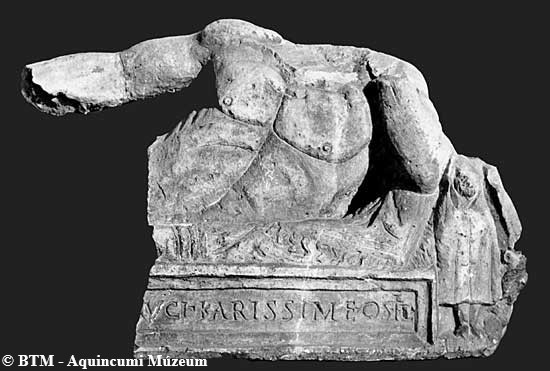The Civil Town’s southern cemetery
In Óbuda we can come across Roman remains or modern structures hiding them if we take a quick look every now and again to the right or the left. Last time we visited the earliest known cavalry fort of Óbuda. We now continue our journey with the area to the south of the Civil Town, which once served as one of the settlement’s cemeteries.
So where are we know?
We are heading north from Árpád Bridge along the Szentendrei Road. After the Filatorigát overpass but before the Aquincum Museum and Záhony Street, we spot on the right a little further from the road the car park of the Auchan Aquincum Óbuda supermarket. Parts of the car park now lie on top of what used to be the Civil Town’s southern cemetery.
But first the history!
In Roman times cemeteries, as a rule, were established outside town walls, with tombs and burials lining the roads leading out of the town. Hence along the Roman road connecting the Civil and Military Towns – the precursor of the modern-day Szentendrei Road – too ran a cemetery for some 150-170 metres on the eastern side.
The cemetery was established in the first third of the 2nd century CE along the road connecting the two parts of Aquincum, then at the turn of the 2nd and 3rd centuries it was abolished. Afterwards, the area was used, among others, by a pottery workshop. During the mid-3rd century, however, came another change of function and the area once again became a cemetery right until the Civil Town was abandoned.

Kline sarcophagus from Aquincum (late-2nd century CE)
One of the site’s most interesting finds, a sarcophagus fragment, came to light during work on the sewers at the Szentendrei Road – Záhony Street intersection, by the former Schütz restaurant in 1931. Although the archaeologists did not find the sarcophagus in its original location, it is, however, likely that it originally stood in the Civil Town’s southern cemetery. Though only a small part of the sarcophagus, dated to the late-2nd century, has survived, the fragment is special in many respects. The stone coffin is rather rare in Pannonia: the limestone of the sarcophagus does not match the variants used in and around Aquincum and its style suggests direct parallels with the East and Asia Minor.
The lid of the so-called kline sarcophagus is not shaped like a roof, as seen on the sarcophagi that spread throughout Pannonia from the late-2nd century onwards. This variant depicts (a) figure(s) reclining on a couch (kline) which protrudes from the flat cover of the tomb. On the Aquincum fragment we see the torso of a semi-clad man in a heroic pose resting on a kline with an ornate cloth. His outstretched right arm most likely once embraced his wife reclining behind him, whom we can no longer see. It is to this woman, too, that the epitaph fragment refers:
— con]iugi karissim(a)e o(pto) s(it) t(ibi) t(erra) l(evis)
— to my dearest spouse. May the earth rest lightly on you.
What can we see today?
Although, for the most part, the area in the 1940s was still barely built up, serious changes followed. After all, the Óbuda prefab house factory stood here from the 1960s, and for over 15 years now this has been the site of the Óbuda Auchan. Hence, there is not much we can see of the Civil Town’s former southern cemetery, but a few sarcophagi found in Óbuda used for secondary burials later on are exhibited by the southern entrance of the supermarket.
Soon we’ll continue our search for Roman remains as there are still plenty of other hidden and conspicuous monuments to discover in Óbuda; but more on those later.
All in all, I encourage everyone to have a look at the site of the former Civil Town’s southern cemetery on foot, or from your car on a cold autumn morning – but only when the traffic isn’t moving!
Zoltán Quittner
Click here to read the previous entries of the Aquincum traffic jam blog!


